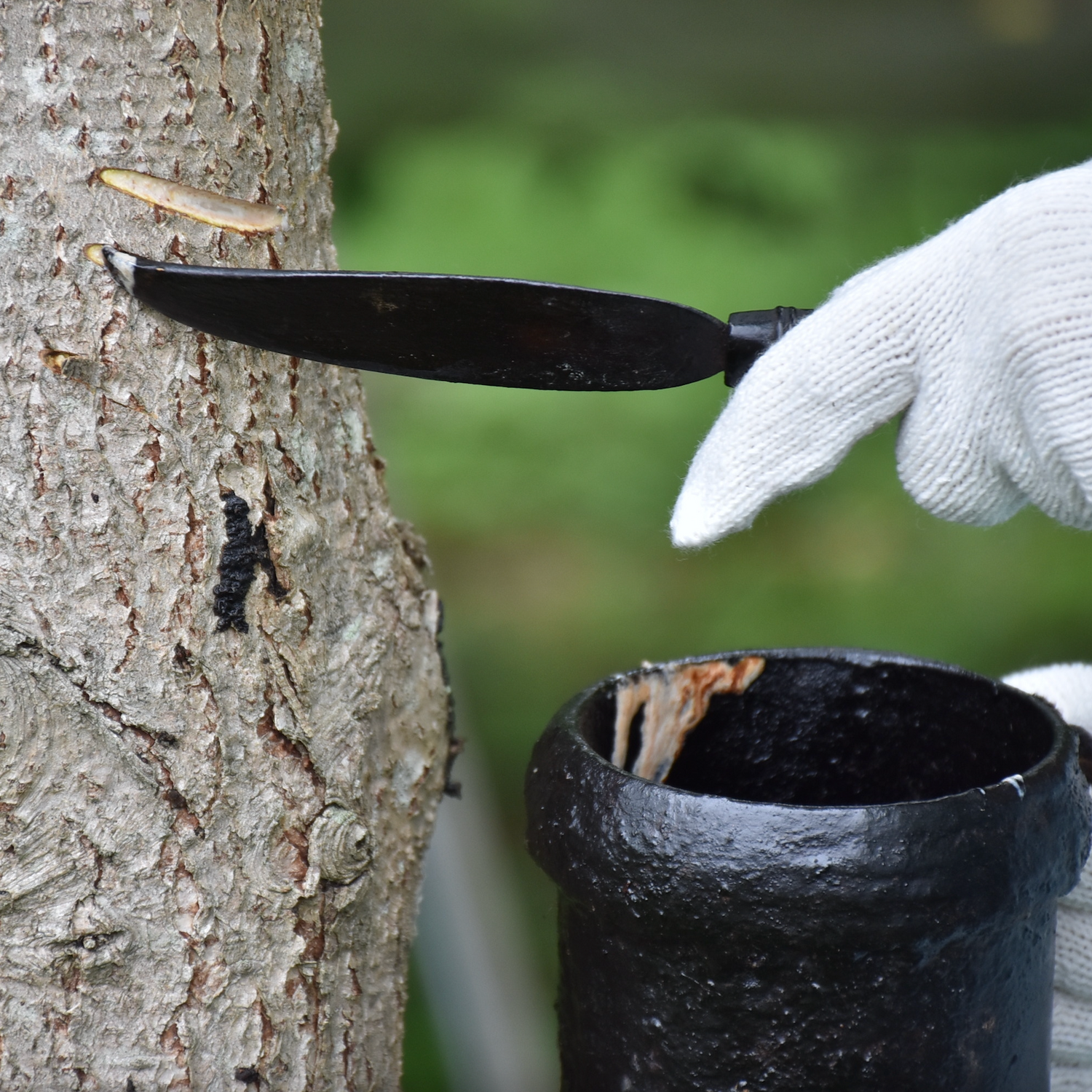What is urushi?
In traditional kintsugi, urushi is mainly used for repair.
Urushi is the sap of a tree called "Toxicodendron vernicifluum". The sap is strained to remove any debris, and is called "raw urushi".
There are many types of urushi other than "raw urushi", but all are made by refining this "raw urushi".
For example, "bengara urushi" used in kintsugi is made by refining raw urushi to adjust the moisture content and fineness of particles, and then adding red pigment to it.
Property of urushi
Urushi has the unusual property that it does not dry without humidity.
It does not exactly dry out, but rather slowly undergoes a curing reaction as it takes in oxygen from the moisture in the air, becoming a strong natural resin.
Generally speaking, the curing reaction proceeds best when the temperature is maintained at 25°C and the humidity at around 75%.
This property allows for very robust repairs even at room temperature.
However, it does take time to cure completely.
For example, black urushi used for first coat usually takes 8 hours at the earliest, while thicker urushi, such as mugi urushi, usually takes about a week.
In addition, the properties of urushi vary slightly depending on the region where it was collected and the season, so it is important to proceed with repairs slowly and according to the pace of the urushi.
History of urushi
Urushi has a long history. It is known that daily items using urushi lacquer were produced during the Jomon period, more than 7,000 years ago.
Later, Buddhist ritual implements using urushi lacquer were imported from China, and the production of lacquerware as a craft and decorative item became popular, while at the same time, lacquer craft techniques gradually developed.
Kintsugi was developed by converting the accumulated lacquer techniques into a repair technique.
For example, the "mugi urushi," "kokuso urushi," and "sabi urushi" used in kintsugi are all derived from lacquer techniques, and the process of applying gold powder on the seams at the end is also based on the maki-e technique.
It is precisely because of the history of the deep development of lacquer craft techniques that the technique of kintsugi was developed.
About urushi rash
The only bothersome aspect of urushi is that it causes a severe rash.
Some people are tolerant and do not get rashes at all when they touch it, but those who get rashes from mangoes and other plants in the poison ivy family often have a poor tolerance to urushi.
Basically, a rash occurs when urushi in liquid form comes in contact with the skin, but urushi is known to vaporize slightly, and there have been cases in which people have experienced irritation all over their bodies simply by inhaling the vaporized lacquer.
Research has also shown that many Westerners are constitutionally more prone to urushi rashes than Japanese people, and that severe inflammation often occurs.
On the other hand, once the urushi has hardened, there is no risk of getting a rash from contact with it, so it can be used safely after repair.
Those who are just starting out in kintsugi should be very careful about this point.


Leave a comment
All comments are moderated before being published.
This site is protected by reCAPTCHA and the Google Privacy Policy and Terms of Service apply.